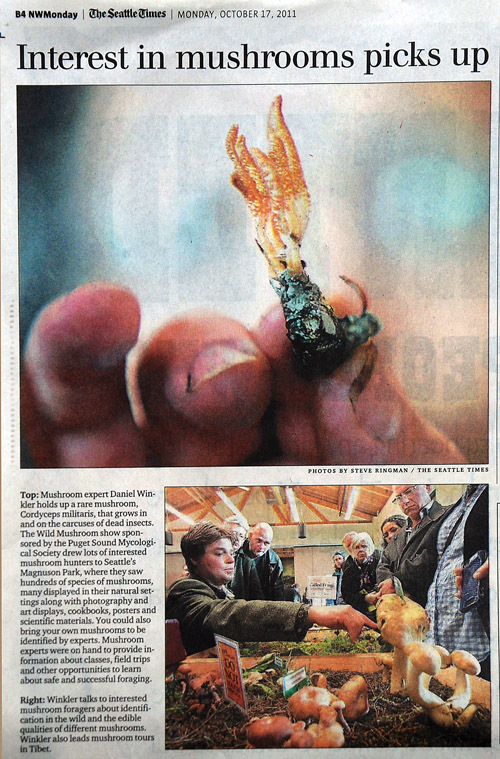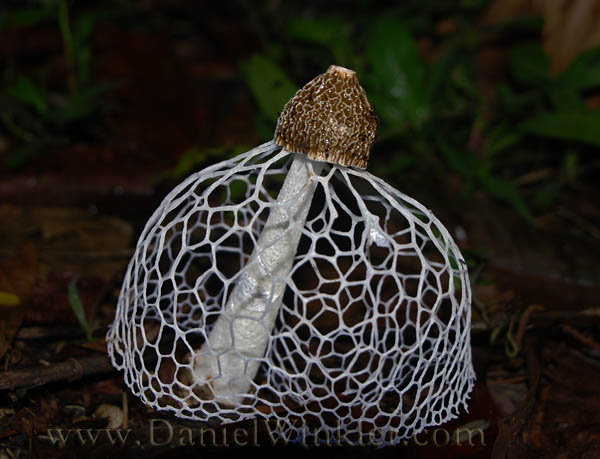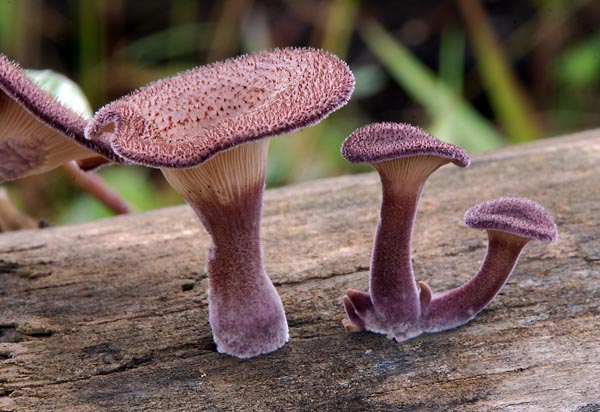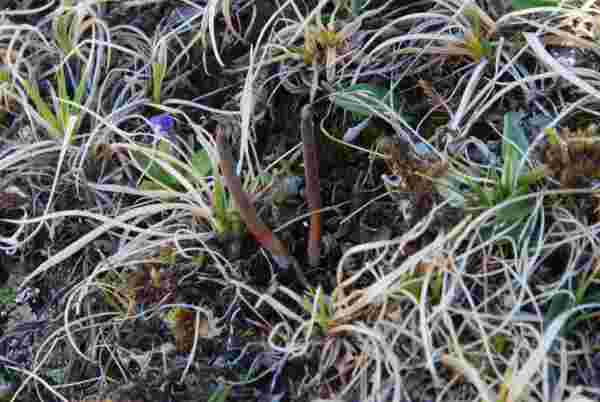Cordyceps militaris & Elaphocordyceps ophioglossoides
found in Western Washington State early October 2011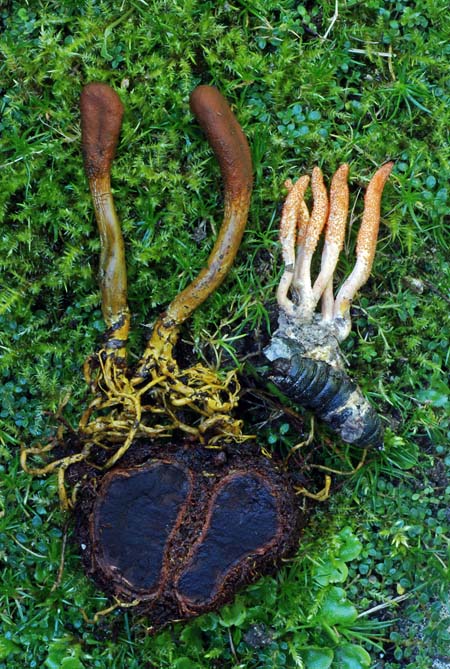
Elaphocordyceps ophioglossoides and Cordyceps militaris.
Photo © D. Winkler
Cordyceps militaris
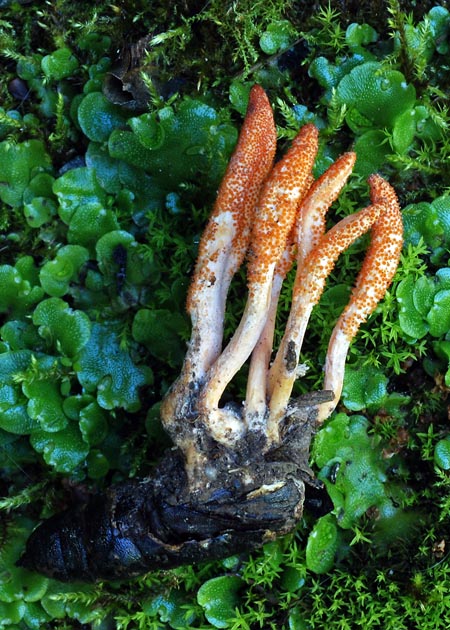
Cordyceps militaris fruiting out of a lepidopteran pupa found by Marian Maxwell. As other trueCordyceps-species it is typified by brightly colored, fleshy stromata. A common name used in the UK is Scarlet Caterpillarclub. Photo © D. Winkler
Drumstick Truffleclub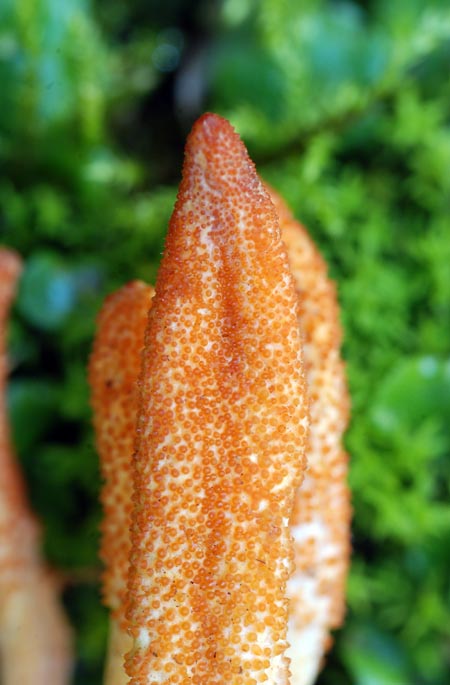
A Cordyceps militaris stroma close-up showing the "blister"-like perithecia. Inside a perithecium longish asci sacs are embedded in which spores are produced. Photo © D. Winkler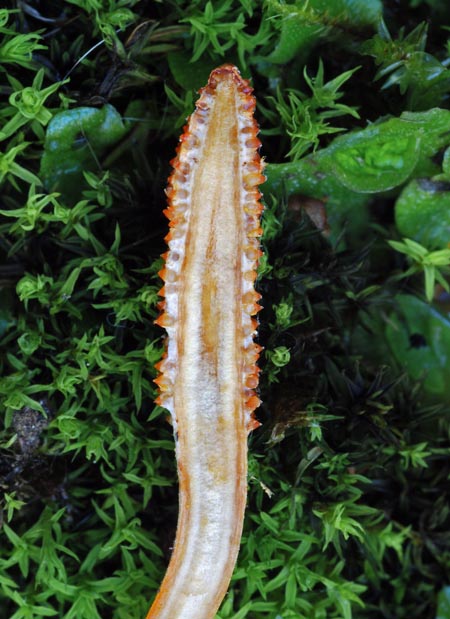
A cross section reveals the structure of the fruiting body. Photo © D. Winkler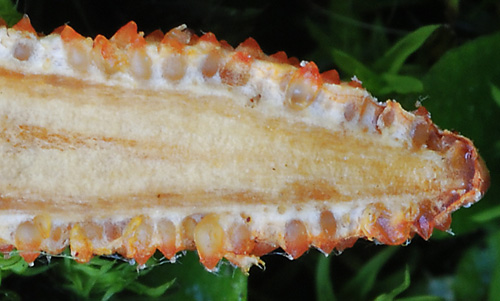
Note, how the perithecia are only partially submersed in the stroma of Cordyceps militaris.
Elaphocordyceps ophioglossoides
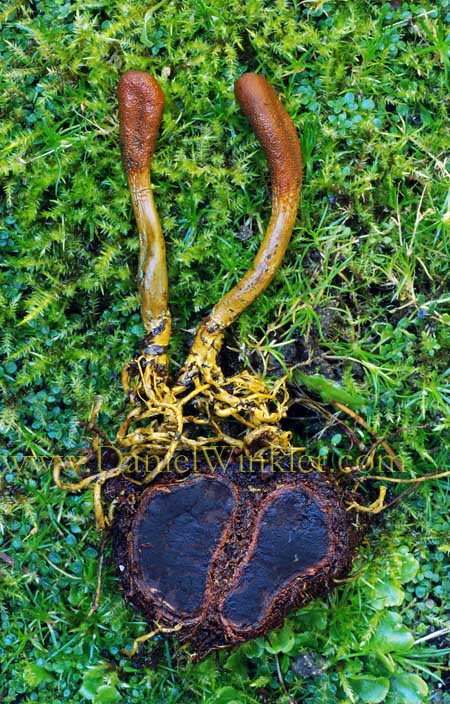
Twin Elaphocordyceps ophioglossoides parasitizing on a twin deer truffle (Elaphomyces sp.).
Snaketongue Truffleclub is a good English name used in the UK. Until 2007 it was classified as a true Cordyceps in the Clavicipitaceae family, but now all truffle parasitizing Cordyceps and closely related species that attack nymphs of cicadas are classified as Elaphocordyceps based on an extensive phylogenetic study published by Sung et al. While Cordyceps militaris is the type species in the new Cordycipitaceae family, Elaphocordyceps and Ophiocordyceps species are in the newly erected Ophiocordycepitaceae with Ophiocordyceps unilateralis as type specimen.
This Elaphocordyceps ophioglossoides specimen was found by Christian Schwarz
in the Sol Duc forests on the Olympic Peninsula. Photo © D. Winkler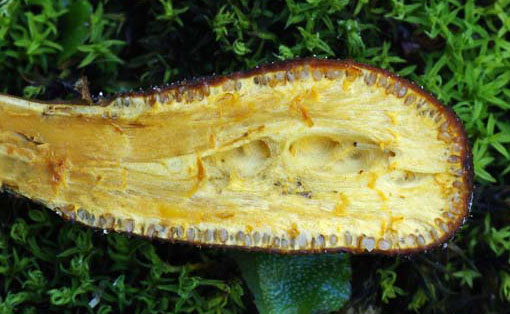
Cross section of the stroma of Elaphocordyceps ophioglossoides. Photo © D. Winkler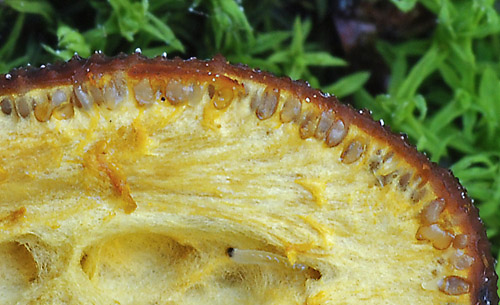
The perithecia are completely immersed in stroma tissue in an ordinal arrangement, where perithecia are oriented in a right angle to the surface.
In the lower center of the image a larva is visible, a parasite parasitizing a parasite,
or more neutrally formulated "The web of life". Photo © D. Winkler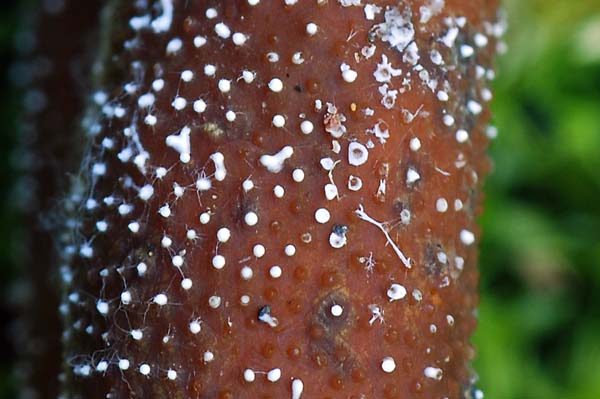
Sporulating Elaphocordyceps ophioglossoides. This photo was taken one day after the photo above showing the complete Cordyceps-truffle complex. Sporulation had commenced.
Whereas spores in the Cordycipitaceae subdivide into part-spores or propagules, spores in the Ophiocordycipitaceae remain whole and can not subdivide. Photo © D. Winkler
Elaphocordyceps capitata
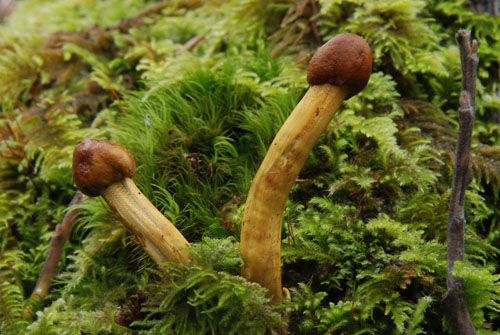
The most common Cordyceps in the PNW seems to be Elaphocordyceps capitata, the Drumstick Truffleclub. This specimen was found by Thom O'Dell near Sol Duc on the Olympic Peninsula in late October 2008. Photo © D. Winkler
The fertile tissue (brown) of the Elaphocordyceps capitata stroma is very distinct from the non-fertile yellow tissue. Photo © D. Winkler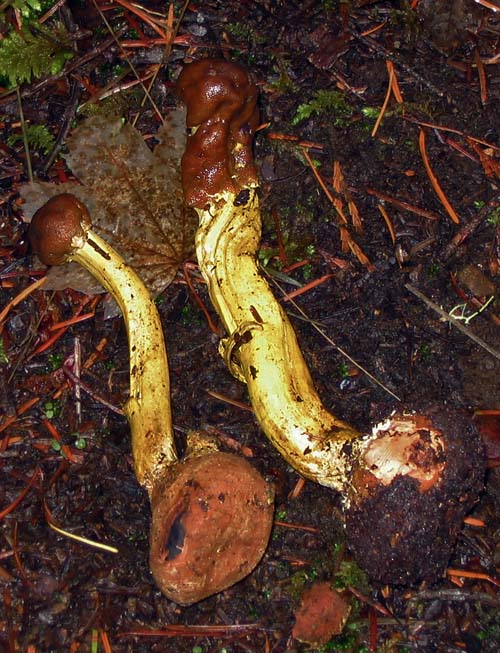
Two freshly dug Elaphocordyceps capitata specimen found near Breitenbush Hot Springs, OR in 2004. The stroma attaches in these specimens directly onto the Elaphomyces truffle, which it is parasitizing. Photo © D. Winkler
More images of other Cordyceps species on my MushRoaming webpages
Caterpillar fungus (Ophiocordyceps sinensis) pages
2012 Cordyceps Expedition to Tibet
